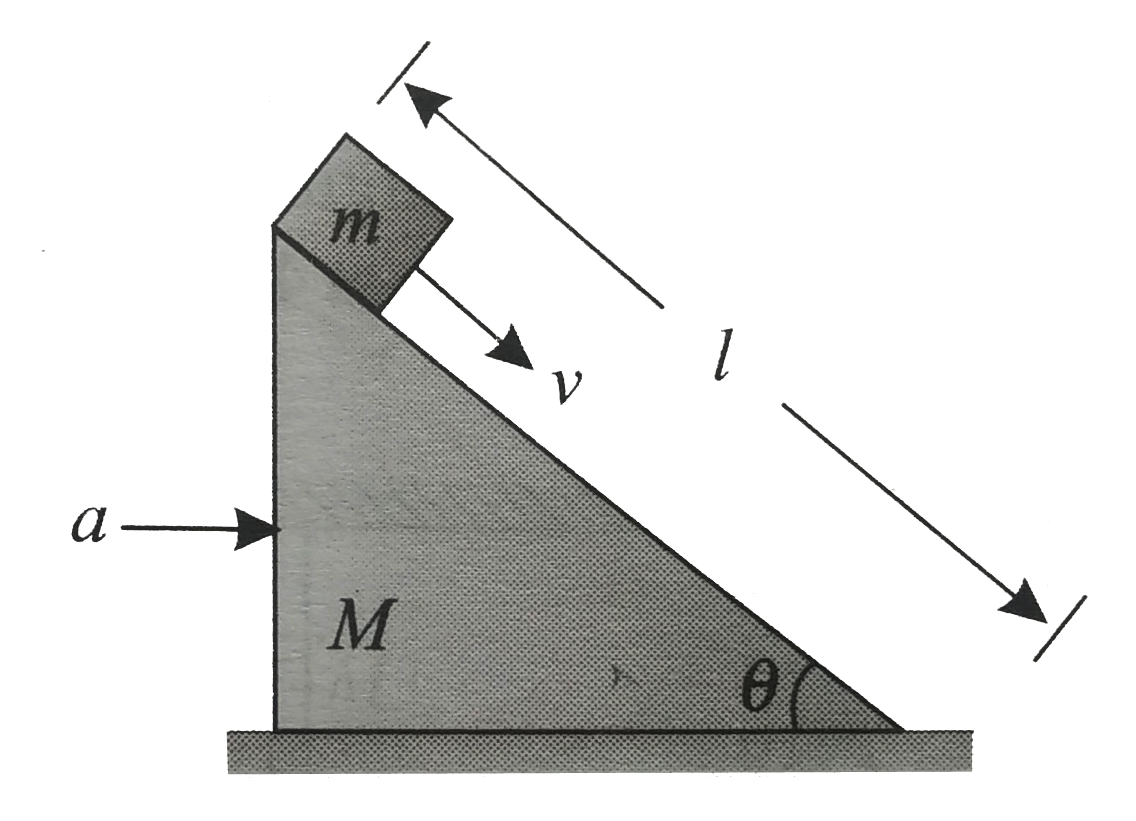A ball hits a vertical wall horizontal at 10 m/s bounces back at 10 m/s
there is no acceleration because 10m/s−10m/s=0
there may be an acceleration because its initial direction is horizontal
there is an acceleration because there is a momentum change
even though there is no change in momentum there is a change in direction. Hence, it has an acceleration
The correct Answer is:C
To solve the problem of a ball hitting a vertical wall horizontally at 10 m/s and bouncing back at 10 m/s, we need to analyze the situation in terms of velocity, acceleration, and momentum.
1. Identify Initial and Final Velocities:
- The ball hits the wall with an initial velocity V1=10m/s (towards the wall).
- After bouncing back, the final velocity V2=−10m/s (away from the wall, hence negative in the opposite direction).
2. Calculate Change in Velocity:
- The change in velocity ΔV can be calculated as:
ΔV=V2−V1=(−10m/s)−(10m/s)=−20m/s
- The negative sign indicates a change in direction.
3. Determine Acceleration:
- Acceleration a is defined as the change in velocity over time. Assuming the time of contact with the wall is t:
a=ΔVt=−20m/st
- Since t is a positive value, the acceleration is also negative, indicating a deceleration in the direction of the initial velocity.
4. Change in Momentum:
- Momentum p is given by p=m⋅v. The change in momentum Δp is:
Δp=m⋅(V2−V1)=m⋅(−20m/s)=−20m
- This indicates a change in momentum, confirming that the momentum is not conserved in the horizontal direction due to the wall's impact.
5. Conclusion:
- The ball experiences a change in velocity and thus an acceleration, despite the magnitudes of the velocities being the same. The correct interpretation is that there is acceleration due to the change in direction of the velocity.
- The ball hits the wall with an initial velocity V1=10m/s (towards the wall).
- After bouncing back, the final velocity V2=−10m/s (away from the wall, hence negative in the opposite direction).
- The change in velocity ΔV can be calculated as:
ΔV=V2−V1=(−10m/s)−(10m/s)=−20m/s
- The negative sign indicates a change in direction.
- Acceleration a is defined as the change in velocity over time. Assuming the time of contact with the wall is t:
a=ΔVt=−20m/st
- Since t is a positive value, the acceleration is also negative, indicating a deceleration in the direction of the initial velocity.
- Momentum p is given by p=m⋅v. The change in momentum Δp is:
Δp=m⋅(V2−V1)=m⋅(−20m/s)=−20m
- This indicates a change in momentum, confirming that the momentum is not conserved in the horizontal direction due to the wall's impact.
- The ball experiences a change in velocity and thus an acceleration, despite the magnitudes of the velocities being the same. The correct interpretation is that there is acceleration due to the change in direction of the velocity.
Topper's Solved these Questions
- LAWS OF MOTION Book:VMC MODULES ENGLISHChapter:LAWS OF MOTION Exercise:EFFICIENT
Explore 50 Videos
- KINEMATICS OF A PARTICLE Book:VMC MODULES ENGLISHChapter:KINEMATICS OF A PARTICLE Exercise:JEE Advanced (archive)
Explore 14 Videos
- LIQUIDSBook:VMC MODULES ENGLISHChapter:LIQUIDSExercise:JEE ADVANCED (LEVEL -2)
Explore 55 Videos
Similar Questions
A ball is projected from ground with a speed 70m/s at an angle 45∘ with the vertical so that it strikes a vertical wall at horizontal distance 4903m from the point of projection. If the ball returns back to the poin tof projection without any collision with ground then find the coefficient of restitution between the ball and wall.
View Solution
A smooth wedge of mass M is pushed with an acceleration a=>anθ and a block of mass m is projected down the slant with a velocity v relative to the wedge.
The horizontal force applied on the wedge is:
View Solution
Knowledge Check
A stream of water flowing horizontally with a speed of 25ms−1 gushes out of a tube of cross-sectional area 10−3m2, and hits at a vertical wall nearby. What is the force exerted on the wall by the impact of water?
A125NB625NC−650ND−1125N
Find the impulse experienced by a body.If the body mass M hits normally a rigid wall with velocity v and bounces back with the same speed.
View SolutionA ball is throw vertically upward. It has a speed of 10m/s when it has reached on half of its maximum height. How high does the ball rise ? (Taking g=10m/s2).
View SolutionA ball is thrown vertically downward with velocity of 20 m/s from top of tower. It hits ground after some time with a velocity of 80 m /s . Height of tower is
View SolutionA ball of 0.5 kg colided with wall at 30∘ and bounced back elastically.The speed of ball was 12m/s. The contact remained for 1s. What is the force applied by wall on ball?
View SolutionA 150 g ball, moving horizontally at 20 m/s was hit straight back to bowler at 35 m/s. If contact with bat lasted for 0.04sec, than average force exerted by the bat on the ball is:

View SolutionA 150 g ball, moving horizontally at 20m/s was hit straight back to bowler at 12m/s. If contact with bat lasted for 0.04 sec, then average force exerted by the bat on the ball is:-
View SolutionA ball is projected vertically up with speed 20 m/s. Take g=10m/s2
View Solution
